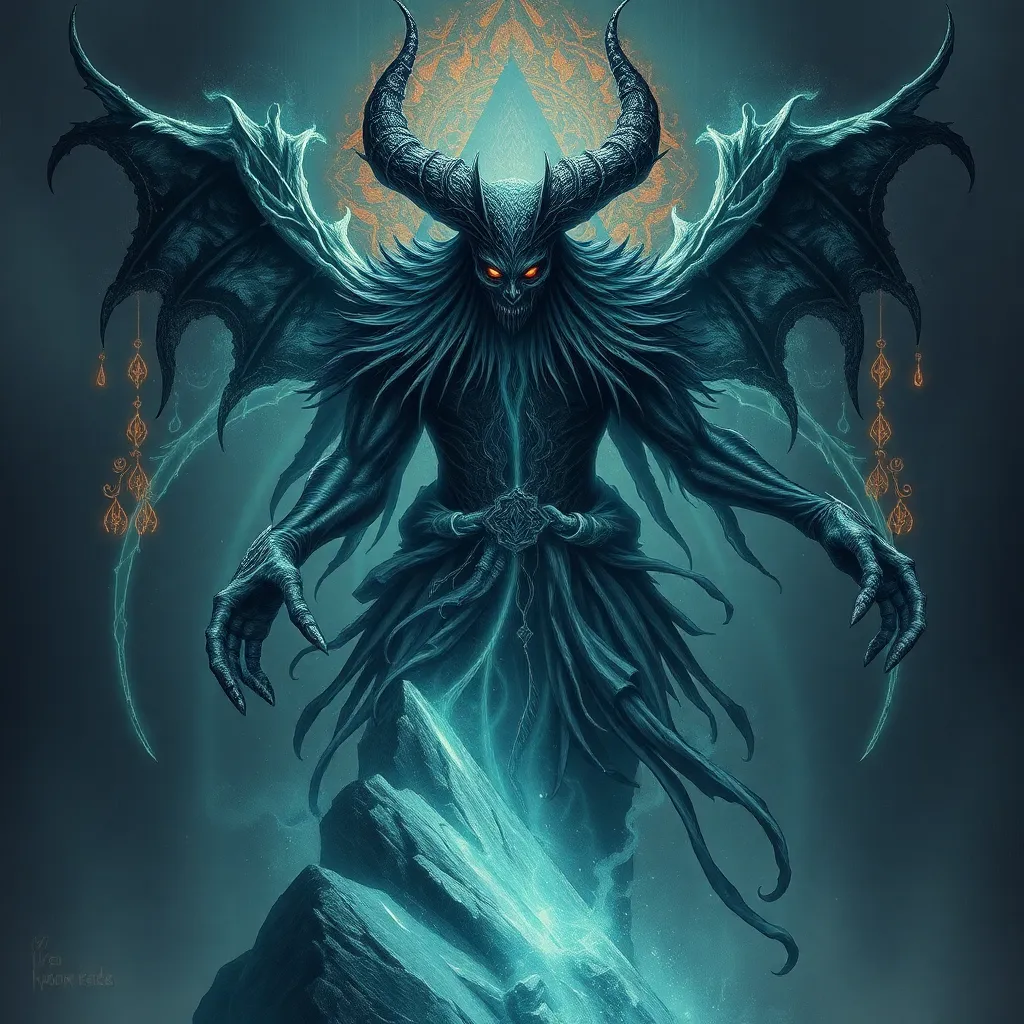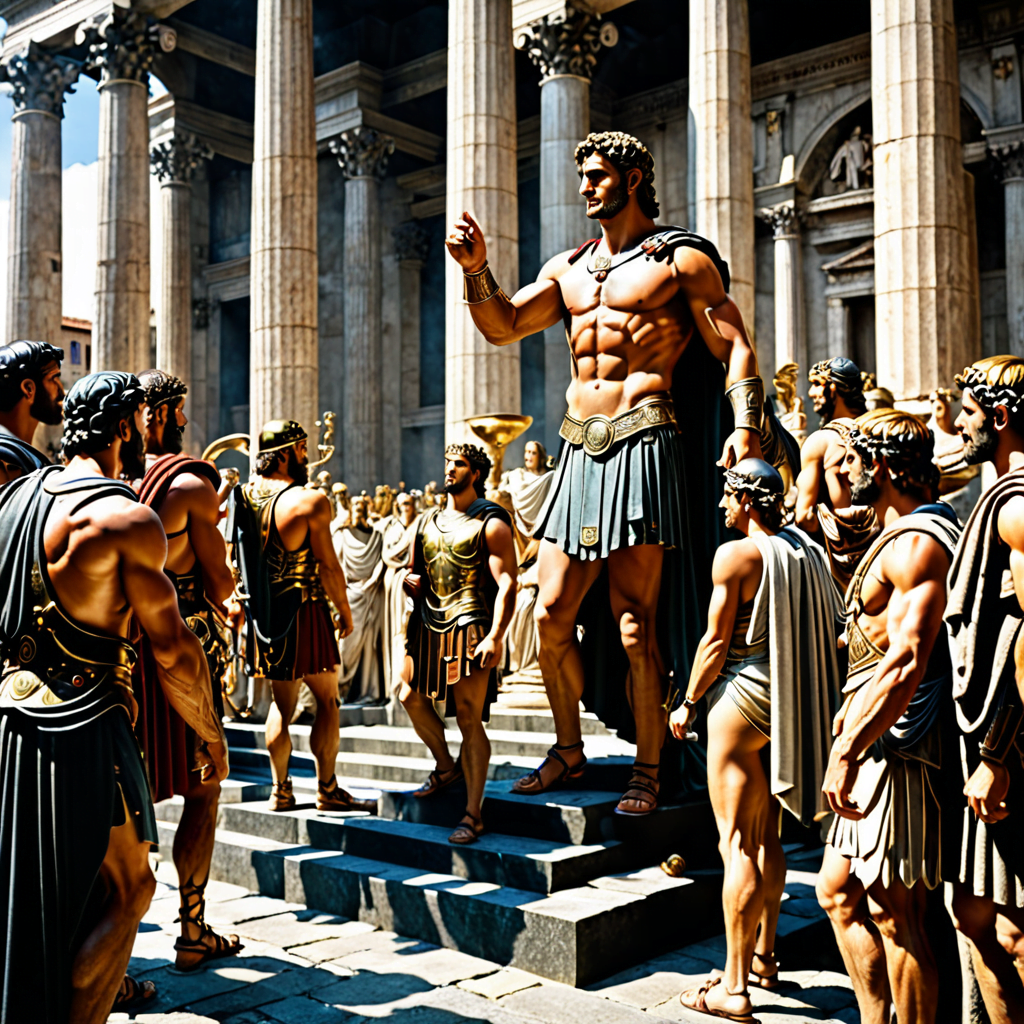Koschei the Deathless: The Slavic Demon of Immortality
I. Introduction
Koschei the Deathless is one of the most intriguing figures in Slavic mythology, often depicted as a malevolent sorcerer who possesses the secret to immortality. His character has fascinated generations, serving as a symbol of the eternal struggle between life and death. This article aims to delve into the origins, characteristics, and cultural significance of Koschei within Slavic folklore, shedding light on his enduring legacy.
II. Origins of Koschei the Deathless
The origins of Koschei the Deathless can be traced back to the rich tapestry of Slavic cultural roots, where folklore served as a means to convey moral lessons and societal values. Historical records indicate that Koschei’s character evolved from earlier pagan beliefs surrounding death and the afterlife.
A. Historical context and cultural roots
Koschei’s narrative likely draws from various pre-Christian Slavic beliefs, where the themes of death and resurrection were prevalent. As Slavic societies transitioned to Christianity, these mythological figures were adapted and reinterpreted through a new lens, often embodying the struggle against evil forces.
B. Evolution of the character in Slavic tales
Over time, Koschei became a staple antagonist in fairy tales, often portrayed as a foil to the hero, embodying chaos and malice. His portrayal varies across different regions, but the core elements of his character—immortality and wickedness—remain constant.
C. Comparison with other mythological figures of immortality
Similar to figures such as the Greek Tithonus or the biblical Enoch, Koschei represents humanity’s fascination with immortality. However, unlike these figures who often have a more benevolent nature, Koschei’s immortality is tied to malevolence and suffering, emphasizing the darker aspects of eternal life.
III. Characteristics and Attributes
Koschei the Deathless is characterized by his striking physical and symbolic attributes that reinforce his role as a formidable adversary in Slavic folklore.
A. Physical description and symbolic representation
Traditionally, Koschei is depicted as a gaunt, skeletal figure, often with long, disheveled hair. He may also be shown adorned in tattered robes, emphasizing his connection to death. His skeletal appearance symbolizes the inevitable decay that accompanies immortality.
B. Powers and abilities associated with Koschei
- Immortality: The most defining characteristic of Koschei, allowing him to evade death.
- Dark magic: Koschei wields powerful sorcery, often using spells to manipulate others.
- Shape-shifting: In some tales, he can transform his appearance, making him an elusive foe.
C. The concept of immortality and its implications in folklore
Koschei’s immortality is not a blessing but a curse, reflecting the belief that eternal life comes with eternal suffering. This theme resonates throughout Slavic folklore, where death often leads to rebirth, and the cycle of life is revered.
IV. Koschei’s Role in Slavic Folklore
Koschei serves as a central figure in many Slavic tales, often embodying the challenges that heroes must overcome to achieve their goals.
A. Common narratives and tales featuring Koschei
In various stories, Koschei kidnaps princesses or youths, forcing heroes to embark on perilous quests to rescue them. His presence introduces conflict and trials that test the virtues of bravery and resilience.
B. His relationship with other mythological beings
Koschei often interacts with other figures in Slavic mythology, such as Baba Yaga or the Firebird. These relationships can be adversarial, as he often opposes the forces of good represented by these characters.
C. Themes of death, life, and rebirth in his stories
Many tales featuring Koschei explore profound themes of death and rebirth, highlighting the cyclical nature of existence. His defeats often lead to new beginnings for the protagonists, reinforcing the idea that life continues despite the presence of death.
V. The Search for Koschei’s Death
A crucial aspect of Koschei’s legend is the quest to discover the means of his death, a pursuit that carries significant symbolic weight.
A. The legend of Koschei’s death and its significance
Koschei’s death is said to be hidden away, often described in various forms, such as a magical needle or heart. This quest symbolizes the search for understanding mortality and the acceptance of life’s fleeting nature.
B. The role of the magical needle or heart
The magical needle is a crucial element in the tales, representing the essence of Koschei’s life. It is often concealed in a series of increasingly complex locations, reflecting the intricacies of life and the elusive nature of death.
C. Symbolism of the quest for immortality and mortality
The search for Koschei’s death serves as a metaphor for humanity’s own quest for meaning and the fear of mortality. It underscores the idea that true strength lies not in evading death but in embracing the life that precedes it.
VI. Cultural Influence and Adaptations
Koschei the Deathless has permeated various forms of cultural expression, shaping literature, art, and modern media.
A. Representation of Koschei in literature and art
In literature, Koschei appears in numerous fairy tales and poems, often depicted as a villain embodying the darker aspects of human existence. Artists have illustrated him in various forms, capturing his eerie presence and the fear he instills.
B. Impact on modern media and pop culture
Today, Koschei’s influence can be seen in films, video games, and television series, where he is often adapted with contemporary twists while retaining his core attributes of menace and immortality.
C. Variations of the Koschei myth across different Slavic cultures
Each Slavic culture has its own interpretation of Koschei, with variations in his story and character traits. For instance, in some tales, he is portrayed as a tragic figure rather than solely an antagonist, adding depth to his character.
VII. Thematic Analysis
Exploring the themes surrounding Koschei reveals significant insights into the human condition and our relationship with life and death.
A. Exploration of immortality and its consequences
Koschei’s immortality serves as a cautionary tale, illustrating that living forever may come at a great price, leading to isolation and despair.
B. The moral lessons conveyed through Koschei’s stories
His narratives often emphasize the importance of courage, self-sacrifice, and the acceptance of mortality, teaching that true fulfillment comes from living a meaningful life rather than seeking eternal existence.
C. Reflections on the human condition and the fear of death
Koschei embodies humanity’s deepest fears and desires, prompting reflections on our mortality and the choices we make in the face of inevitable death.
VIII. Conclusion
Koschei the Deathless stands as a significant figure in Slavic mythology, encapsulating the complex relationship between life, death, and immortality. His stories serve as both warnings and reflections on the human condition, illustrating the enduring struggles we face.
In conclusion, Koschei’s legacy continues to resonate, inviting further exploration of the rich tapestry of Slavic folklore and the timeless themes that it encompasses. The tales of Koschei the Deathless remind us that while death is an inevitable part of life, the quest for meaning and understanding is what truly defines our existence.



